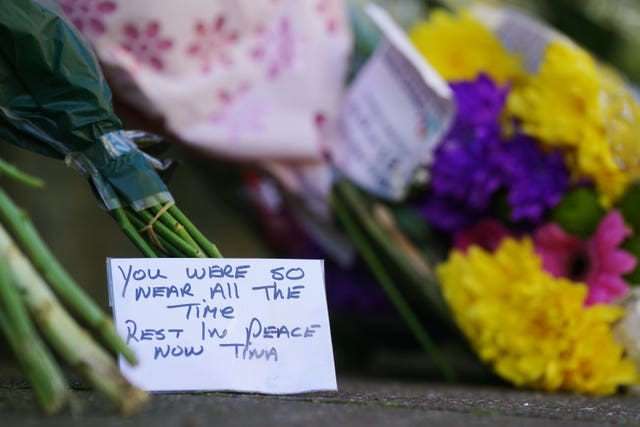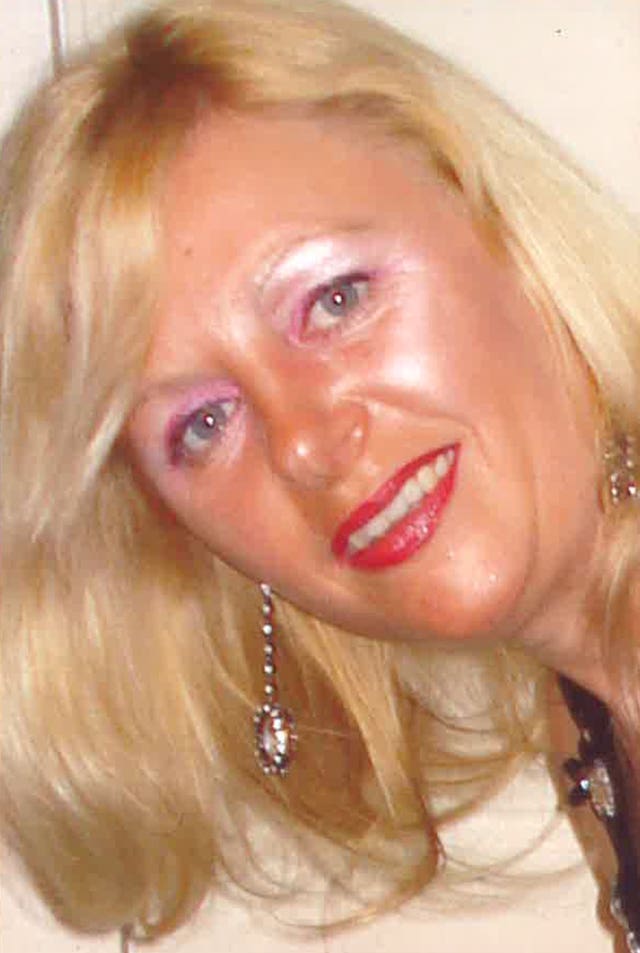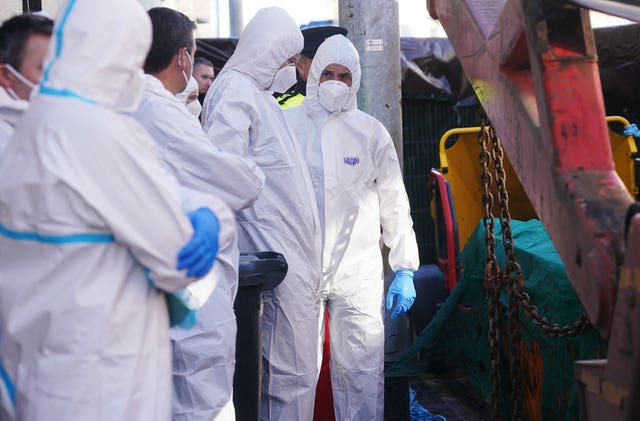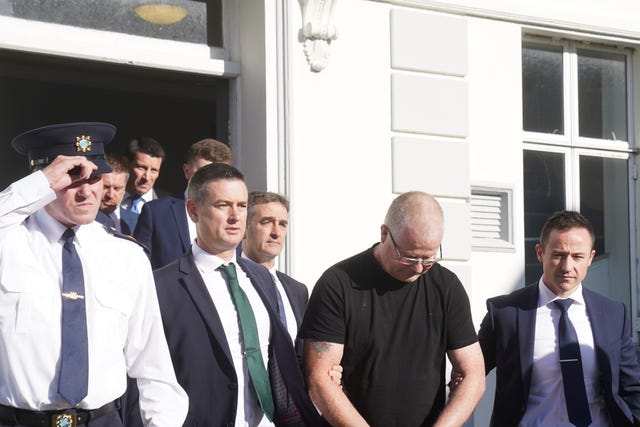Tina Satchwell’s cause of death could not be determined, jury hears
Richard Satchwell, 58, of Grattan Street in Youghal, is accused of murdering his wife Tina in 2017.

Tina Satchwell’s cause of death could not be determined due to the skeletal nature of the remains recovered from a grave in her home, the jury in her murder-accused husband’s trial has heard.
Richard Satchwell, of Grattan Street in Youghal, is accused of murdering his wife between March 19 and 20, 2017.
The 58-year-old, who is originally from Leicester in England, denies the charge.

The jury in Satchwell’s trial at the Central Criminal Court in Dublin has heard details of the post-mortem examination of Mrs Satchwell after her remains were found under the stairs in the living room of their Co Cork home in October 2023, six years after Satchwell reported her missing.
On Tuesday, assistant state pathologist Dr Margaret Bolster told the jury that she was asked to attend the scene where Mrs Satchwell’s remains were found on October 12, 2023.
She said she observed that a wall had been removed and a hole at a depth of approximately 62cm had been dug.
She said Mrs Satchwell’s remains, which looked to be in a considerable state of “longstanding disarray”, were found in what was effectively a grave.
Dr Bolger, who told the jury she had completed some 30,000 post-mortem examinations, said she began the examination of Mrs Satchwell’s remains in the Cork City mortuary that evening, before finishing her work the following morning.
She said she was given information that Mrs Satchwell had been in previous good health.
The body was received in a black body bag, and a layer of black plastic which was put on the scene to keep the remains together and preserve and trace evidence.
Beneath that, the body was in another layer of black plastic and also wrapped in a heavily stained, soiled sheet – which appeared to be a bed sheet.

She said the soiling of the bed sheet was to be expected due to the earth and the decomposition of the body.
There was debris and soil present on the body and bones could be seen protruding through the bed sheet.
The body was received lying face down and was dressed in pyjamas and a dressing gown.
A gold-coloured Playboy branded purse was removed from the left hand pocket of the dressing gown.
It contained a Tesco clubcard, a Public Services Card, a Holland and Barrett rewards card, an Xtravision premium membership card, a Rathcormack car boot sale card, and a Boots advantage card in Mrs Satchwell’s name.
Dr Bolger outlined details of the post-mortem examination, stating that the body was rotated onto its back for the examination.
She told the jury the skull had separated from the rest of the body as a result of the natural process of decomposition, while one of the arms and femurs had also been disarticulated.
She explained there was formation of “adipocere” on parts of the remains, which forms in decomposing tissue in warm and moist environments.
Dr Bolger said there were also pieces of what could be glass found on the scalp and body but added she could not say where the pieces had come from.
Asked if it was possible the glass came from the sheet, she said she could not say.

Dr Bolger said she could not examine for external marks or injuries due to the length of time between death and the post-mortem examination.
She said examiners would normally document every single marking on the head, neck and body to get an understanding of what may have been the cause of death.
She said an internal examination was not possible because there were no organs remaining after decomposition.
Therefore, she added that no comment on natural disease could be made.
Dr Bolger said a toxicology report was also not possible, although a small amount of head hair was examined and showed that prescribed or illicit drugs had not been consumed in the previous 90 days.
On the small amount of muscle that was available for examination, she said she could not identify any signs of hemorrhage or bleeding.
There was no evidence of any fractures – or previous fractures – to any of the remaining bones throughout the skeletal remains, including in x-rays of Mrs Satchwell’s hands.
There was no evidence of fracture to the hyoid bone.
Dr Bolger said this was like a chicken wishbone at the top of the voice box, which had “not much more” of a consistency than a matchstick.

She explained that this bone is fractured in roughly 9% of hangings, 24% of ligature strangulations, and 73% of manual strangulations or incidences of throttling.
She said that Mrs Satchwell’s larynx could not be identified in the decomposing remains.
Dr Bolger said the dressing gown cord was in a “very unusual position” and was not threaded through the loops of the gown itself.
The jury was shown a video of a garda with a different dressing gown cord tied around his body to demonstrate how it appeared on the remains.
The cord of the gown in the reconstruction was wrapped over the shoulder of the garda, across the chest under the other arm, and wrapped around the back to be tied on the front of the body.
She said this was done over the dressing gown.
The original gown and belt was explained to be in a brittle and hazardous state.
Under cross-examination by Brendan Grehan SC, for Mr Satchwell, Dr Bolger was asked if the tying of the gown was like something used to carry a body.
She replied: “That’s exactly my thoughts.”
She explained from her experience it was difficult to move a deceased body and very often ligatures are used to move a body from one area to another.

Also under questioning from Mr Grehan, Detective Garda David Kelleher told the court that the dressing gown had been photographed and searched for Mrs Satchwell’s wedding ring in February of this year.
He said this was done as Satchwell had said he placed the ring in a pocket of the gown.
The ring has not been recovered, the jury heard.
The jury previously heard evidence from a forensic scientist who said the gown and cord were not suitable for examination as they were too damp, mouldy and brittle.
Mr Grehan asked if it was possible the ring fell out of the gown, which had partially disintegrated.
Det Gda Kelleher, the garda in the reconstruction video, said he could not be sure.
Ms Satchwell’s former doctor, Dr Deirdre O’Grady, returned on Tuesday after being asked to search for documents relating to her care.
However, she said that the files could not be located and offered two potential explanations for why that may be the case.
She said either Ms Satchwell had taken the documents herself when she changed doctors, or that the files had been shredded at some point after her file was inactive for eight years.
Meanwhile, Dr O’Grady reiterated that she had no recollection of claims that she had consulted with Satchwell after an alleged overdose or after an alleged incident in which his face was scratched by his wife.
The trial continues on Wednesday.





